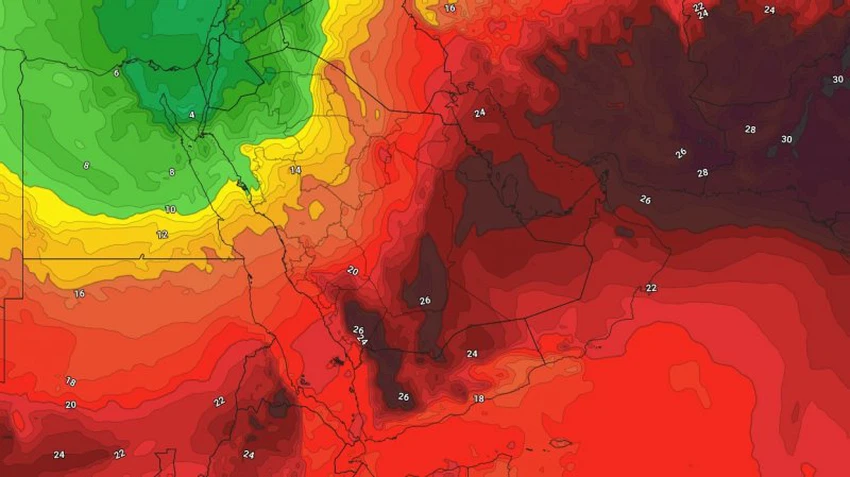Saudi Arabia: A cold air mass affects the north of the Kingdom, while a subtropical high pressure system controls the rest of the region.
Arab Weather - The latest outputs from numerical computer models indicate that most regions of the Kingdom of Saudi Arabia will continue to be affected by a high-pressure system in the upper atmosphere, accompanied by a relatively hot to hot air mass passing through the lower atmosphere. Temperatures will remain several degrees Celsius above their climatic average, while the northern regions will be affected by a cooler air mass coming from the eastern Mediterranean basin.
Temperatures approach 38 degrees Celsius in Riyadh, with hot weather in most areas.
The weather in the coming days will be relatively hot to hot during the day, with maximum temperatures approaching 38 degrees Celsius in the capital, Riyadh, while the weather will remain moderate in the southwestern mountain range (the Kingdom's summer resorts) due to the elevation of these areas above sea level. Winds will be variable in direction and light to moderate, while they will be southwesterly and active in speed during the afternoon and evening periods in the Hail region, which will increase the concentration of dust and suspended dust in the atmosphere.
At night, temperatures drop and the weather tends to be moderate in the late night and early morning hours, while it is pleasant in the southwestern highlands and tends to be cold over the high peaks.

A cold air mass is affecting the north of the Kingdom, accompanied by severe cold weather at night.
In detail, a cooler, colder air mass coming from the eastern Mediterranean basin and the Levant region is expected to sweep into the northern parts of the Kingdom. This air mass will specifically impact Tabuk, Al-Jawf, and the Northern Borders, accompanied by a significant drop in temperatures and the possibility of scattered rain showers mid-next week.
Maximum temperatures in the aforementioned regions (Tabuk, Al-Jawf, and the Northern Borders) are expected to drop to between 17 and 21 degrees Celsius, while at night they will drop to between 5 and 8 degrees Celsius. As a result, the temperature differences between day and night will be sharp and may exceed 16 degrees Celsius. Therefore, it is recommended to wear warm coats during the dawn and early morning hours, especially in the first days of next week.
And God knows best.
Arabia Weather App
Download the app to receive weather notifications and more..



